The Olympus Trip 35 is a very widely sold and used camera, and having heard good things about it, I was happy when I recently acquired one, and I packed it on a trip to Paris. Normally I would take a camera with a wide angle as well as a standard lens, but I knew that I wouldn’t have much time to use one, so I decided to travel light. My first film through it had been a disaster, after which I realized that, when in auto-exposure mode, the shutter was permanently stuck on something like f16. It is possible to choose an aperture, but as this is intended only for flash, I think this sticks the speed at 1/60. So I had no way to tell whether it was just sticking aperture blades or a faulty exposure meter. After a friend recommended them, I sent it to Skears Photographic, in Northampton, who did it for a good price and returned it in a couple of days. Its main advantages are that it is very light (much lighter than the other Olympus 35mm compact I have) and does not require any batteries.
My first shot was from my hotel room. It was the evening and there the shadows resulted in a dramatic contrast between the street and the tops of the buildings. Being a totally automatic camera I had no choice over exposure and it was more than the film could really cope with, so after scanning, I needed to tone down the bright areas more than I would have liked, but perhaps the contrast between the two areas of the image, is the main feature of this photo illustrating a significant feature of the light in cities like this.
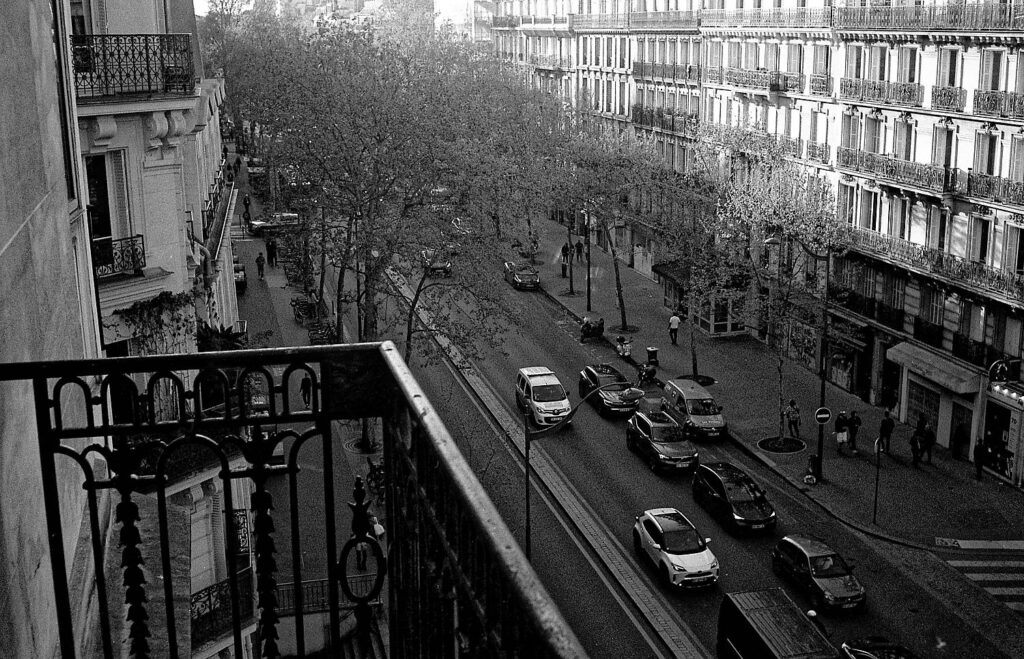
Though there was enough light for this photo, it was getting dark very quickly and by the time I had found some food in a nearby supermarket, I decided that there wasn’t enough light to do anything else. So the only other photos I could take were in the morning, on the walk from my hotel to a meeting. But I could walk along the river, which I knew would provide opportunities.
My first hope was that I would be able to see the rebuilt Notre Dame, but it turned out that I was too far away for a clear view. However, though the main subject here is the bridge, it shows how the cathedral dominates the skyline.
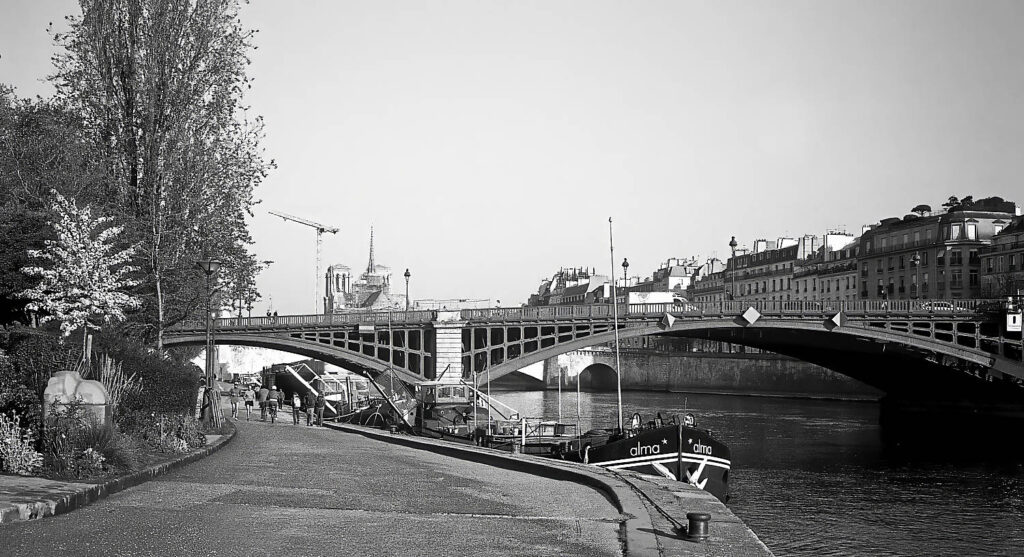
Perhaps not surprisingly, the bridges were the highlight of the walk as they are all in very different styles. The next one here is the Viaduc d’Austerlitz, which carries the metro over the river into the Gare d’Austerlitz. The girders seemed an ideal test for the camera’s lens.
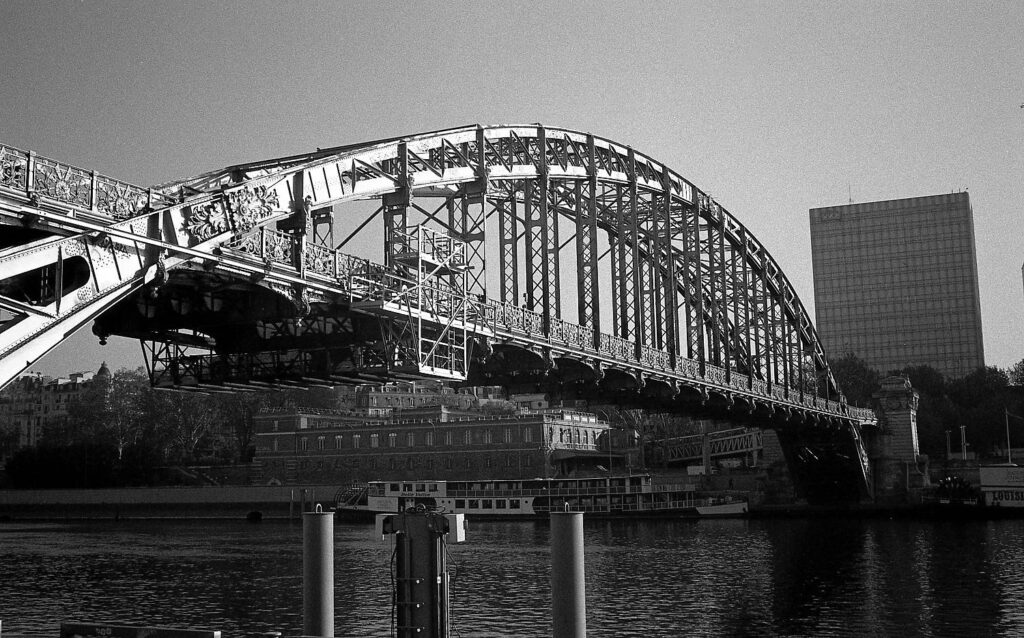
The next shot shows the viaduct taking the metro into the station, where it continues above ground level before eventually disappearing underground again. The viaduct and the station offered opportunities, but I was not free to linger.
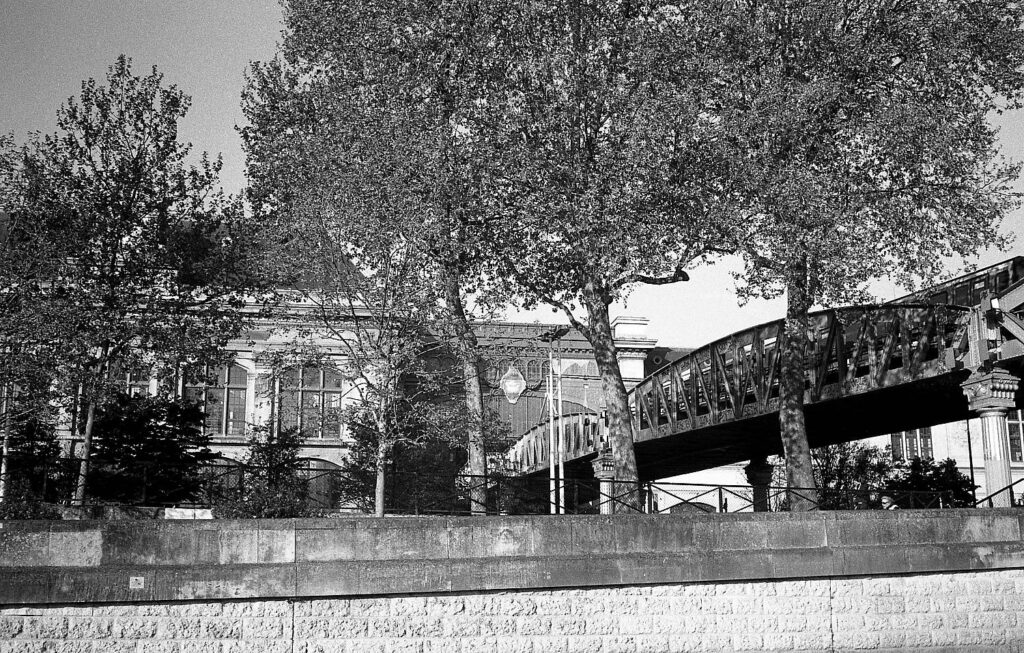
Being fairly early in the morning, the sun was low, and I inevitably tried a few contra-jour shots, though with no knowledge about how the camera’s meter, without any lens hood (presumably important given the location of the light meter round the lens. I thought one photo worked, dominated by the concrete pillars and their long shadows.
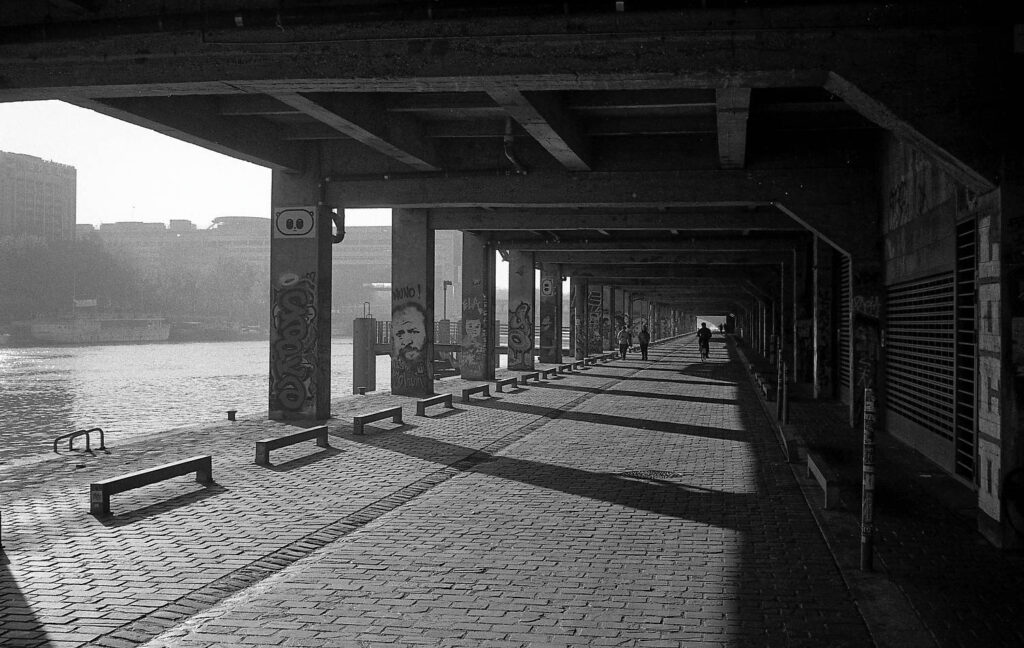
However a couple of other shots did not. I wanted one of the viaduct showing the metro, but I was not in the right place when a train went past. Obviously a shot into the sun like this would be difficult for any camera, but the flare on this is obvious and obtrusive. Not a camera for such situations. Of course, I could have changed the ISO setting, but that’s not the easiest way to adjust the exposure. (I am not including this failure as one of the five shots.)
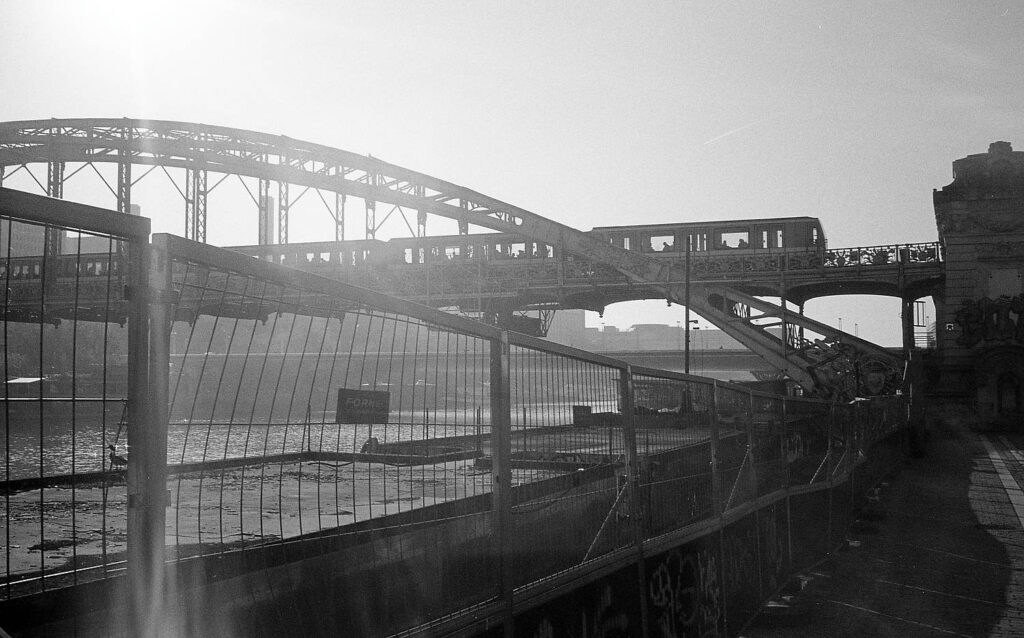
Overall, I felt that the camera lived up to its reputation as being very sharp and having good contrast and, though Ilford Pan F or even FP4+ might have been better, I was happy with most of the shots. The camera is not one I would use all the time, but there are occasions when its light weight and simplicity will make it an attractive choice.
Share this post:

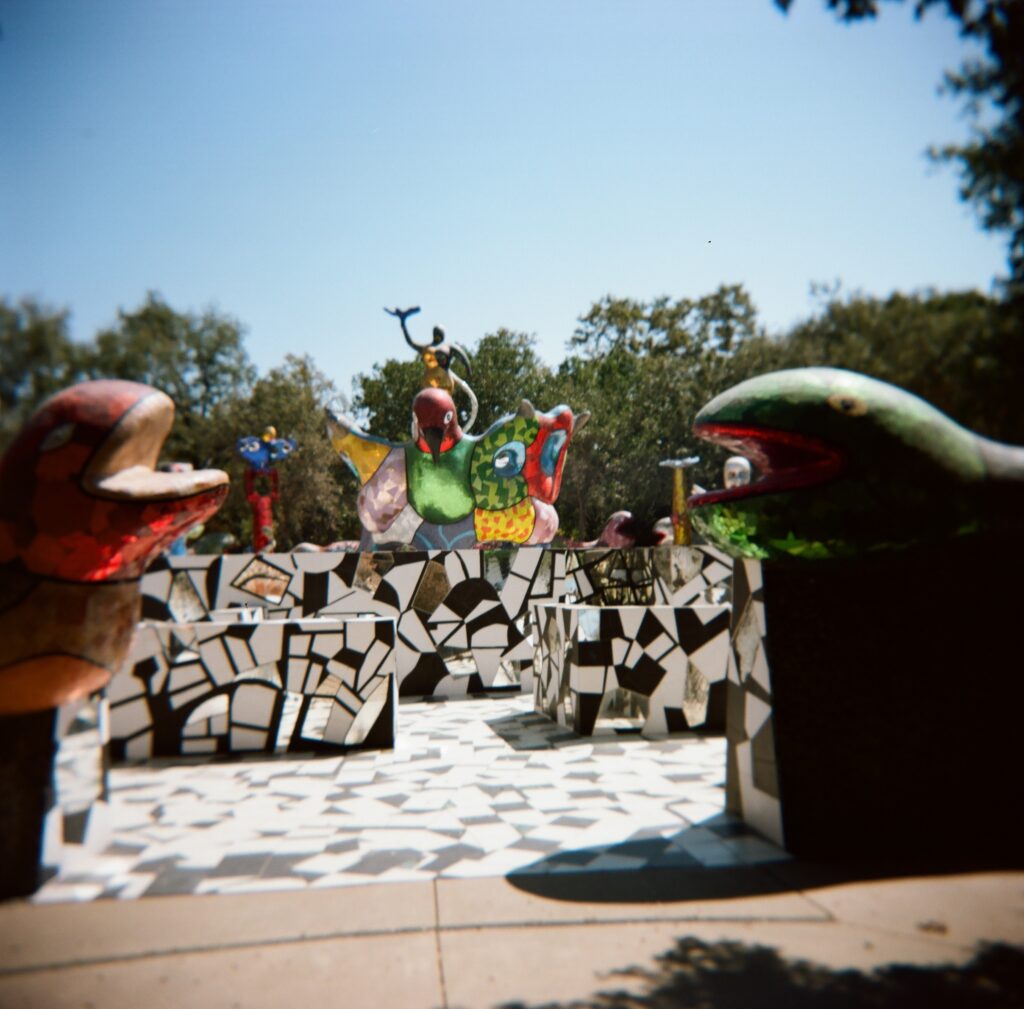
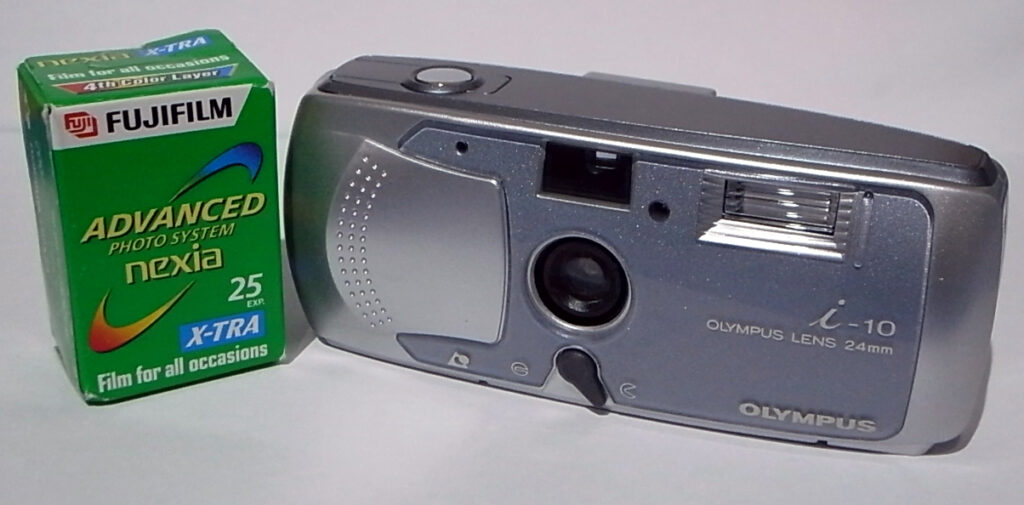
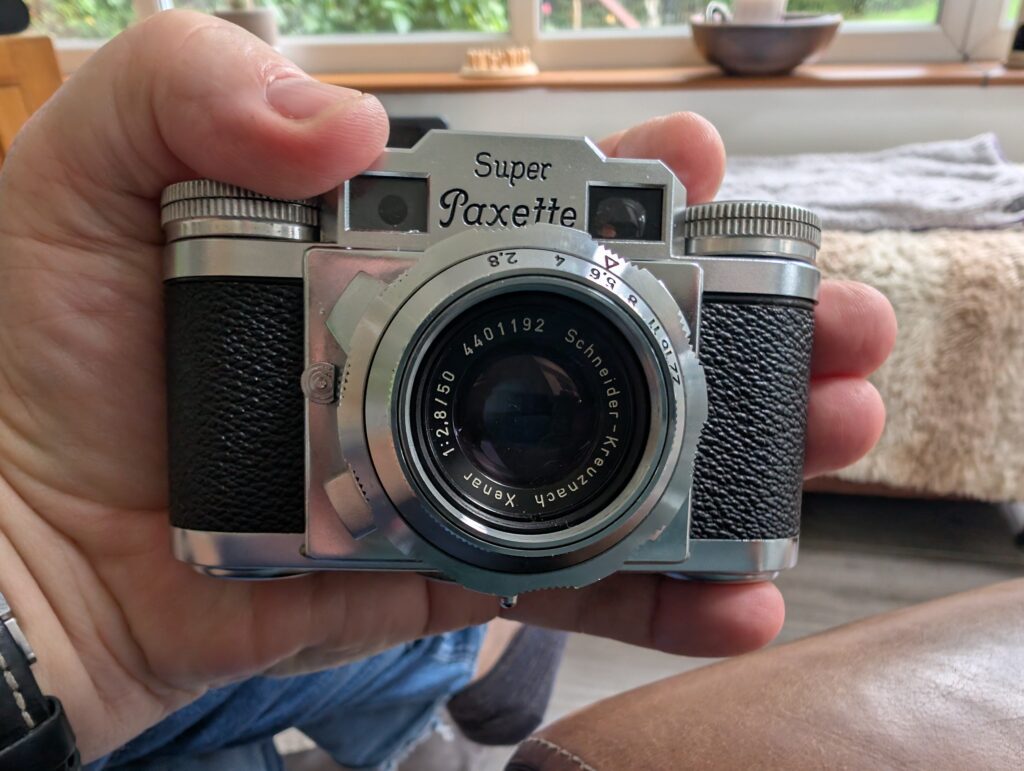




Comments
JA on 5 frames with an Olympus Trip 35 and Kentmere 100
Comment posted: 16/05/2025
i like the photos my Trip (and the Pen) take alot. but i find the "you will not take this photo" quite frustrating. so it generally gets left behind in favour of a retinette 1B
being able to see the focus scale in the viewfinder is a great feature though i wish more viewfinder cameras had that much nicer than have to tilt the camera and check everytime
Ibraar Hussain on 5 frames with an Olympus Trip 35 and Kentmere 100
Comment posted: 16/05/2025
Cheers brother
davesurrey on 5 frames with an Olympus Trip 35 and Kentmere 100
Comment posted: 16/05/2025
There's just something that makes it so enjoyable, perhaps its simplicity.
Great shots BTW.
Roger on 5 frames with an Olympus Trip 35 and Kentmere 100
Comment posted: 17/05/2025
Glad you all liked the photos.
Russ Rosener on 5 frames with an Olympus Trip 35 and Kentmere 100
Comment posted: 02/06/2025
Comment posted: 02/06/2025